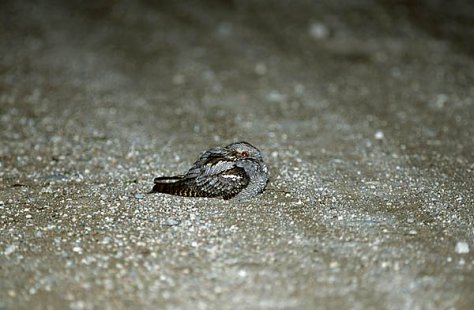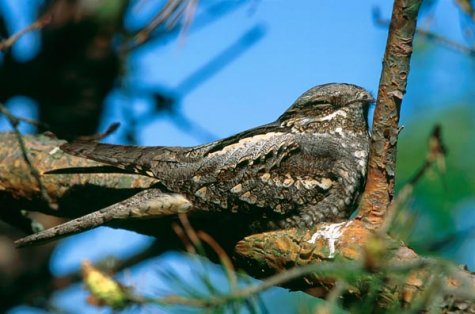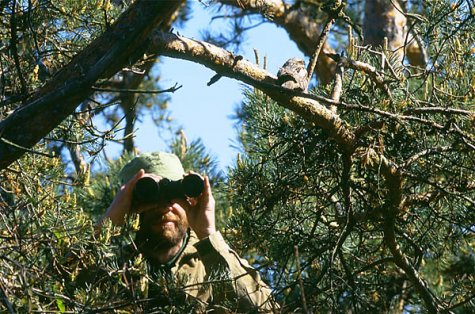Nightjar observation
Photos: Arne Ader
Translation: SilverT
Nightjar on a road
European nightjar Öösorr Caprimulgus europaeus
During late evenings and nights on slightly remote roads, may it be asphalt or gravel, one can often see birds who appreciate wider opportunities for hunting. Nightjar`s beak is too small to look for food on the ground, therefore they catch their prey on flight. They hunt larger night-flying insects, beetles and nightflies. Smaller ones who can be seen flying in large numbers during August nights don`t receive any attention, because they are more difficult to catch for the nightjar.
If a late night driver reaches such part of the road which has lots of nightjars, he should reduce speed, because young and inexperienced birds might not react quickly enough if they are caught in the beams of car lights. It`s also more interesting for the driver to see when another big pair of eyes starts glaring than looking at the monotonous line of the road. Nocturnal nightjars love space and they inhabit sparse heath or bog pine groves, woodlands, but also the edges of mixed forests where pine is prevailing. In September, during migration they can be seen even in city parks. They are protected nesting birds whose numbers are reducing and there currently about five thousand of them in Estonia. Nightjar`s wingspan is over half a meter, body length about quarter of a meter, but they weigh only about eighty grams.
Nightjar resting on pine branch
During daytime, while snoozing linearly on a pine trunk and waiting for the dusk, they are able to „blend in“ nicely with the surroundings. Some individuals can be observed even from a few meters and when disturbed, they don`t fly too far as well. Both sexes have a rather similar plumage; male bird has white spots on wingtips and on tips of tail edges.
Nightjar observation











